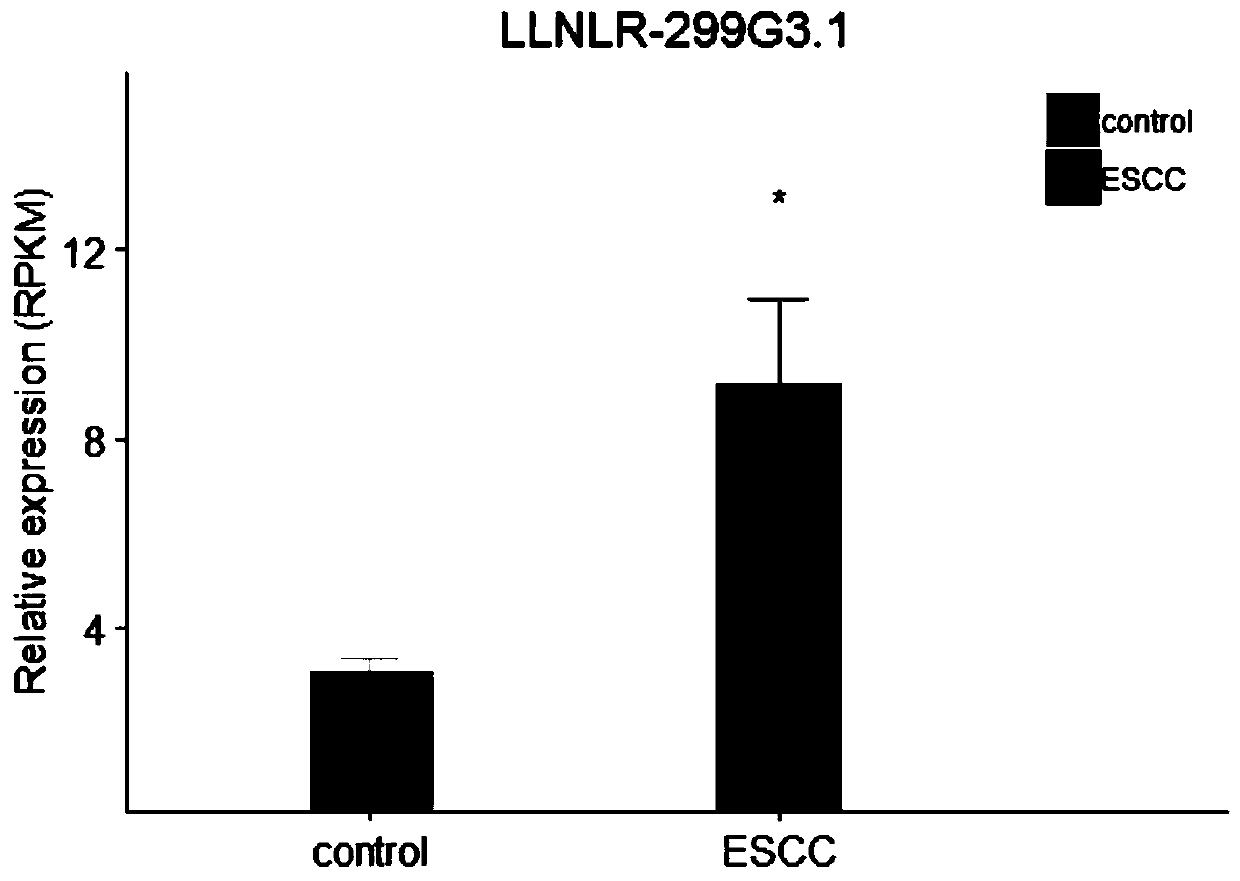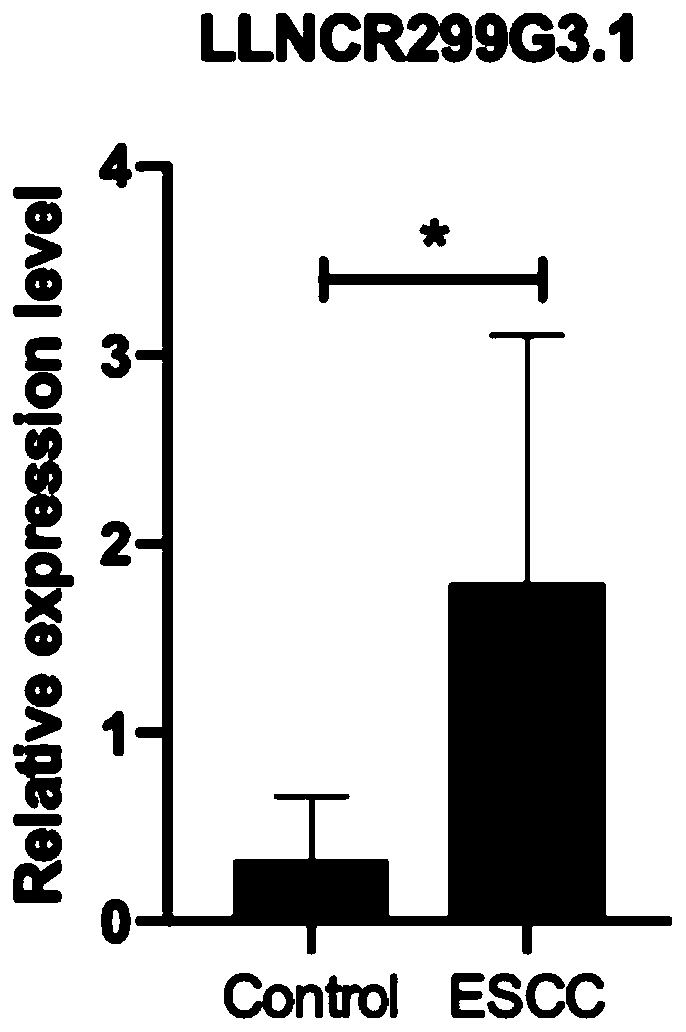lncRNA LLNLR-299G3.1 related to esophageal squamous cell carcinoma (ESCC) and application thereof
A kit and inhibitor technology, applied in DNA/RNA fragments, recombinant DNA technology, microbial measurement/testing, etc., can solve problems such as limited clinical application of lncRNA molecules
- Summary
- Abstract
- Description
- Claims
- Application Information
AI Technical Summary
Problems solved by technology
Method used
Image
Examples
Embodiment 1
[0047] Example 1 Discovery of LLNLR-299G3.1
[0048] 1. Selection of research objects
[0049] Pathologically confirmed ESCC cases, age-matched patients with esophagitis confirmed by digestive endoscopy and healthy controls were collected from the Department of Thoracic Surgery of Shenzhen People's Hospital. All research subjects signed the informed consent. The research protocol was approved by the Medical Ethics Committee (approval number: 2016001).
[0050] 2. Comparison of plasma exosomal lncRNA expression profiles of research subjects (ESCC patients, esophagitis patients, healthy controls)
[0051] Peripheral blood was drawn from the research subjects, allowed to stand at 4°C for 1 hour, centrifuged at 1000g for 10 minutes to separate the plasma, and the separated plasma was stored at -80°C until testing.
[0052] Plasma exosomes were isolated using an exosome isolation kit (Ribo-Exosome-Isolation-Kit C10110). The main steps included: centrifugation at 2,000×g for 20 m...
Embodiment 2
[0064] Example 2 Study on the relationship between the expression of LLNLR-299G3.1 and the proliferation and migration of ESCC cells
[0065] 1. Construction of LLNLR-299G3.1 overexpression stable transfection strain
[0066] According to the sequence (SEQ ID No.1) of LLNLR-299G3.1 in GeneBank, primers (SEQ ID No.2 and SEQ ID No.3) were designed to amplify human full-length LLNLR-299G3.1, and the sequence was directly synthesized into The lentiviral shuttle plasmid vector is the pHBLV-CMV-MCS-3flag-EF1-ZsGreen-T2A-PURO vector (map as Figure 5 shown) above. Among them, LLNLR-299G3.1 is inserted between EcoRI and BamHI.
[0067] First amplify the target gene by PCR, then digest the above-mentioned lentiviral shuttle plasmid vector with EcoRI and BamHI endonucleases, and configure the ligation system according to the ratio of the target gene to vector 3:1-8:1 (vector vector 1 μl; target gene 1 μl ; T4ligase 0.5μl; 10×ligase Buffer 1μl; ddH 2 O To 10μl), 14~16℃, 16hrs to comp...
Embodiment 3
[0082] Example 3 Antisense oligonucleotide (ASO) of LLNLR-299G3.1 inhibits the growth of ESCC transplanted tumor in nude mice
[0083] In this example, liposome nanoparticles were used to deliver antisense oligonucleotides against LLNLR-299G3.1 (one of ASO, ASO1, ASO2 or ASO3) to inhibit the growth of ESCC transplanted tumors in nude mice. Animals were divided into groups: ESCC cells TE1 in the logarithmic growth phase were taken, and 1×10 cells were subcutaneously injected on the back of nude mice 7 cells / mouse to construct an ESCC animal model. When the tumor volume is about 30mm 3 Afterwards, the animals were randomly divided into 4 groups, 5 in each group, and were injected with ASO empty-liposome nanoparticle-linked polypeptide (i.e. Figure 10 Middle label 2: plCSA-NNPs), ASO-liposome nanoparticles (ie Figure 10 Middle label 3: ANPs); ASO-liposome nanoparticle-linked polypeptide (ie Figure 10 Middle label 4: plCSA-ANPs), and normal saline (blank control, ie Figur...
PUM
 Login to View More
Login to View More Abstract
Description
Claims
Application Information
 Login to View More
Login to View More - R&D
- Intellectual Property
- Life Sciences
- Materials
- Tech Scout
- Unparalleled Data Quality
- Higher Quality Content
- 60% Fewer Hallucinations
Browse by: Latest US Patents, China's latest patents, Technical Efficacy Thesaurus, Application Domain, Technology Topic, Popular Technical Reports.
© 2025 PatSnap. All rights reserved.Legal|Privacy policy|Modern Slavery Act Transparency Statement|Sitemap|About US| Contact US: help@patsnap.com



